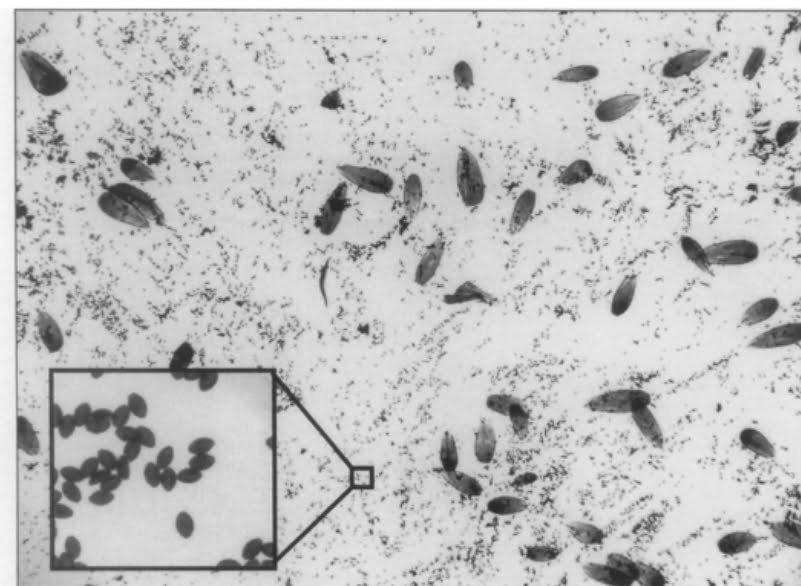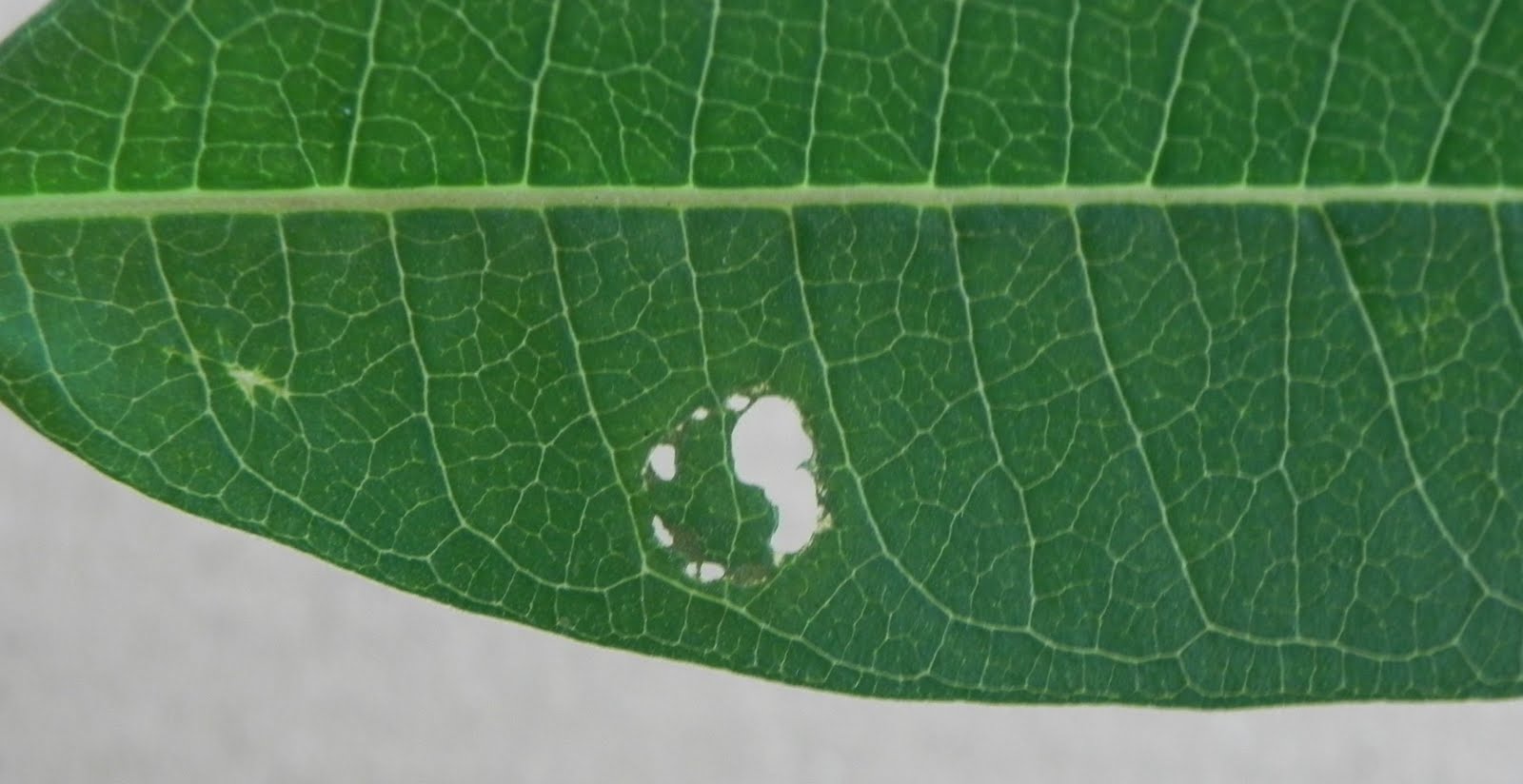Step 5: Examine Under the Microscope
- Place the slide under the microscope.
- Adjust the microscope to the 40X magnification setting. 100X is better, if available.
- Focus the microscope until the leaf material becomes clear.
- Scan the slide slowly, looking for O.E. spores, which will appear as small, oval, and darkly colored objects, much like American footballs.


Step 6: Record Observations
- Keep a notebook handy to jot down what you see.
- If possible, capture images through the microscope for documentation.
- Note the density and distribution of the spores, if present.
Step 7: Dispose of the Sample
- Once done, carefully remove the slide from the microscope stage.
- Dispose of the tape and slide in a proper waste container.
Step 8: Clean Up
- Turn off the microscope and cover it.
- Dispose of your gloves.
- Clean your workspace.
Conclusion
Testing for O.E. spores on milkweed leaves is crucial for understanding the health of your local Monarch and Queen butterfly populations. Although a 40X student-grade microscope may not offer the highest resolution, it is sufficient for a basic O.E. test. This DIY guide makes the process simple enough for anyone to carry out, contributing to citizen science and the conservation of these beautiful creatures… one day at a time!
